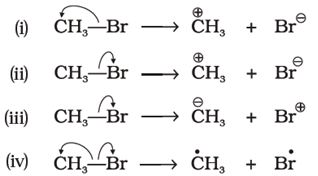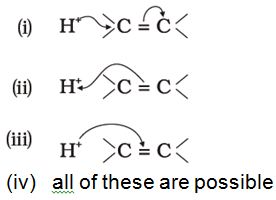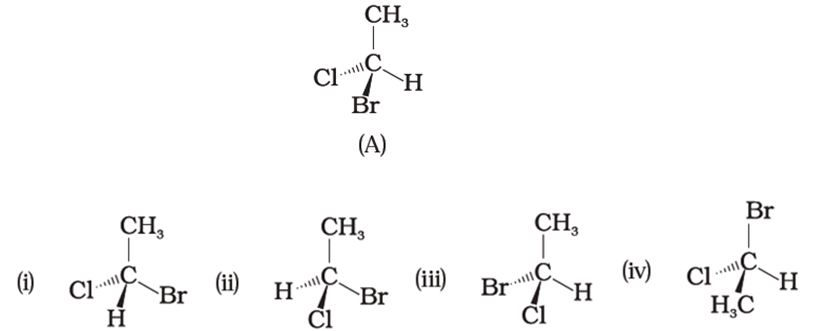Organic Chemistry Some Basic Principles and Techniques - Online Test
Q1. When an organic compound is present in an aqueous medium, it is separated by
Answer : Option A
Explaination / Solution:
They are separated by differential extraction.
Q2. Electrophilic addition reactions proceed in two steps. The first step involves the addition of an electrophile. Name the type of intermediate formed in the first step of the following addition reaction.
Answer : Option B
Explaination / Solution:
A secondary carbocation is formed.
Q3. In general, in the molecules containing multiple bonds,_____ provide the most reactive centres. Choose the most appropriate one.
Answer : Option A
Explaination / Solution:
pie bonds are the most reactive centers.
Q4. Covalent bond can undergo fission in two different ways. The correct representation involving a heterolytic fission of is


Answer : Option D
Explaination / Solution:
arrows are shown in the direction of movement of electrons.
Q5. The addition of HCl to an alkene proceeds in two steps. The first step is the attack of H+ ion to portion which can be shown as


Answer : Option C
Explaination / Solution:
arrows are shown in the direction of movement of electrons.
Q6.
For testing halogens in an organic compound with solution, sodium extract (Lassaigne’s test) is acidified with dilute What will happen if a student acidifies the extract with dilute in place of dilute HNO3?
Answer : Option D
Explaination / Solution:
white precipitate of is formed.
Q7. Delocalisation of σ electrons of C -H bond of an alkyl group directly attached to an atom of unsaturated system or to an atom with an unshared p orbital is called:
Answer : Option B
Explaination / Solution:
Delocalisation of σ electrons of C -H bond of an alkyl group directly attached to an atom of unsaturated system or to an atom with an unshared p orbital is known as Hyperconjugation
Q8. Which of the following compounds contain all the carbon atoms in the same hybridisation state?
Answer : Option A
Explaination / Solution:
In A all Carbon atoms are sp hybridized.
Q9. In which of the following representations given below spatial arrangement of group/ atom different from that given in structure ‘A’?


Answer : Option A
Explaination / Solution:
No Explaination.
Q10. Why Kjeldahl method cannot be used for the estimation of nitrogen present in DNA and RNA? Choose the most appropriate option.
Answer : Option A
Explaination / Solution:
Nitrogen present in rings, azo groups and nitro groups of DNA and RNA cannot be removed as ammonia
